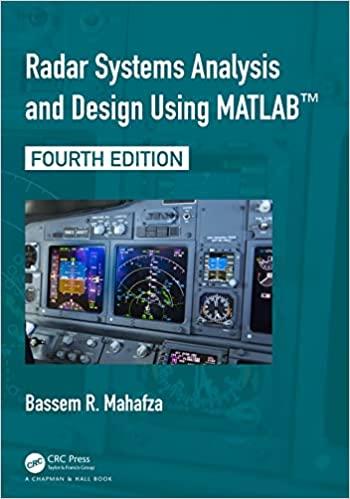A certain radar has the following parameters: peak power (P_{t}=500 mathrm{~kW}), total losses (L=12 d B), operating
Question:
A certain radar has the following parameters: peak power \(P_{t}=500 \mathrm{~kW}\), total losses \(L=12 d B\), operating frequency \(f_{o}=5.6 \mathrm{GHZ}\), PRF \(f_{r}=2 \mathrm{kHz}\), pulse width \(\tau=0.5 \mu \mathrm{s}\), antenna beam width \(\theta_{a z}=2^{\circ}\) and \(\theta_{e l}=7^{\circ}\), noise figure \(F=6 d B\), and scan time \(T_{s c}=2 \mathrm{~s}\). The radar can experience one false alarm per scan. (a) What is the probability of false alarm? Assume that the radar searches a minimum range of \(10 \mathrm{~km}\) to its maximum unambiguous range. (b) Plot the detection range versus RCS in \(\mathrm{dBsm}\). The detection range is defined as the range at which the single scan probability of detection is equal to 0.94 . Generate curves for Swerling I, II, III, and IV type targets. (c) Repeat part (b) above when noncoherent integration is used.
Step by Step Answer:

Radar Systems Analysis And Design Using MATLAB
ISBN: 9780367507930
4th Edition
Authors: Bassem R. Mahafza




